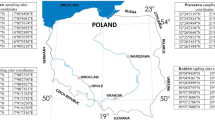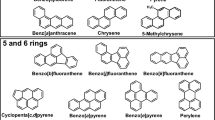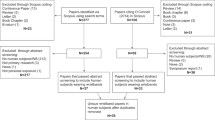Abstract
Consumer uses of fuels and lubricants in Europe are subject to the Registration, Evaluation, Authorization and restriction of CHemicals (REACH) legislation. Ten volunteers completed a series of exposure situations to simulate filling a vehicle fuel tank with diesel (ES1 Diesel), adding lubricant to a car engine (two situations, one filling point easier to reach (ES2 Easy) than the other (ES3 Hard)) and lubricating a bicycle chain (ES4 Bike). Dermal exposure to the hands and forearms was assessed using a wipe sampling method. A high proportion of samples was less than the limit of detection (ES1=38%, ES3=60%, ES2 and 4, both 78%). In ES1 Diesel, dermal exposure to the hands and forearms ranged from <0.25 μg/cm2 to 96.21 μg/cm2. Significantly higher dermal exposure was observed when a lower level of care was taken to complete the task. In ES2 Easy and ES3 Hard, the hand and forearm results ranged from <0.1 μg/cm2 to 3.33 μg/cm2 and from <0.1 μg/cm2 to 3.54 μg/cm2, respectively. In ES4 Bike, the hand and forearm exposures ranged from <0.35 μg/cm2 to 5.25 μg/cm2. Not all volunteers fully complied with the ES4 instructions, thus highlighting that this situation may have more variability in consumer behaviour. The ratio of the amount measured on the hands and forearms to the amount of product handled for ES1 Diesel, ES2 Easy and ES3 Hard was less than 0.0001%, for ES4 Bike it was 0.04%. Mixed effect models showed that the between and within volunteer variations are small for all except ES1 Diesel, where the within volunteer variation was relatively large (likely due to the few high measurements). This study reports dermal exposure measurement data, which will be of value when updating REACH and other exposure assessments for these, and similar, petroleum products.
This is a preview of subscription content, access via your institution
Access options
Subscribe to this journal
Receive 6 print issues and online access
$259.00 per year
only $43.17 per issue
Buy this article
- Purchase on Springer Link
- Instant access to full article PDF
Prices may be subject to local taxes which are calculated during checkout





Similar content being viewed by others
References
European Union. Regulation (EC) No 1907/2006 of the European Parliament and of the Council of 18 December 2006 concerning the Registration, Evaluation, Authorisation and Restriction of Chemicals (REACH). Off J Eur Commun 2006; 136: 3–280.
European Chemicals Agency. Guidance on information requirements and chemical safety assessment Chapter R.15: Consumer exposure estimation, ECHA-10-G-03-EN European Chemicals Agency: Helsinki, Finland. 2012.
Rajan-Sithamparanadarajah R, Roff M, Delgado P, Eriksson K, Fransman W, Gijsbers JH et al. Patterns of dermal exposure to hazardous substances in European Union workplaces. Ann Occup Hyg 2004; 22: 285–297.
Fenske RA . Dermal exposure assessment techniques. Ann Occup Hyg 1993; 37: 687–703.
van Hemmen JJ, Brower DH . Assessment of dermal exposure to chemicals. Sci Total Environ 1995; 168: 131–141.
ISO/TR. ISO/TR 14294: Workplace atmospheres. Measurement of dermal exposure. Principles and measurement. British Standards Institute: Milton Keynes. 2011.
Kromhout H, Vermeulen R . Temporal, personal and spatial variability in dermal exposure. Ann Occup Hyg 2001; 45: 257–273.
Galea KS, McGonagle C, Sleeuwenhoek A, Todd D, Jimenez AS . Validation and comparison of two sampling methods to assess dermal exposure to drilling fluids and crude oil. Ann Occup Hyg 2014 (Epub ahead of print, doi:10.1093/annhyg/meu014.
NHS Hand washing technique with soap and water. Clean your hands campaign. NHS National Patience Safety Agency 2007.
Reynolds M . Study 210979: Final report Fuels and Lubricants Exposure Questionnaire Survey - Phase 1. Alba Science report: Edinburgh, UK. 2011.
Aworanti OA, Agarry SE, Ajani AO . A laboratory study of the effect of temperature on densities and viscosities of binary and ternary blends of soybean oil, soy biodiesel and petroleum diesel oil. Adv Chem Engineer Sci 2012; 2: 444–452.
Helsel DR . Fabricating data: How substituting values for nondetects can ruin results, and what can be done about it. Chemosphere 2006; 65: 2434–2439.
Helsel DR Nondetects and data analysis. Statistics for censored environmental data 2005.
Christopher Y, van Tongeren M, Cowie H, Cherrie JW . Occupational dermal exposure to heavy fuel oils, Research Report TM/07/05. Institute of Occupational Medicine: Edinburgh. 2007.
Core Team R . R: A language and environment for statistical computing. R Foundation for Statistical Computing: Vienna, Austria. 2013.
VSN International. GenStat for Windows 16th edn VSN International, Hemel Hempstead: UK. 2013.
CEN/TS 15279. Workplace exposure – measurement of dermal exposure – Principles and methods. European Committee for Standardisation: Brussels, Belgium. 2006.
Bogen KT . Dermal uptake of 18 dilute aqueous cheicals: in vivo disappearance-method measures greatly exceed in vitro- based predictions. Risk Analysis 2013; 33: 1334–1352.
Sartorelli P, Cenni A, Matteucci G, Montomoli L, Novelli MT, Palmi S . Dermal exposure assessment of polycyclic aromatic hydrocarbons: in vitro percutaneous penetration from lubricating oil. Int Arch Occup Environ Health 1999; 72: 528–532.
Potter D, Booth ED, Brandt HC, Loose RW, Priston RA, Wright AS et al. Studies on the dermal and systemic bioavailability of polycyclic aromatic compounds in high viscosity oil products. Arch Toxicol 1999; 73: 129–140.
Cinalli C, Carter C, Clark A, Dixon D . A laboratory method to determine the retention of liquids on the surface of hands, EPA 747-R-92-003 US Environmental Protection Agency Office of Pollution Prevention and Toxics: Washingon, DC. 1992.
Hatem A, Lehton M . Effectiveness of glue odour as a warning signal. Ergonomics 1995; 38: 2250–2261.
Adair G . “The Hawthorne effect: A reconsideration of the methodological artifact”. J Appl Psychol 1984; 69: 334–345.
Acknowledgements
We thank representatives of CONCAWE for their helpful comments and suggestions throughout the project, in particular Jan Urbanus, Chris Money, Alison Margary and Arlean Rhode. We also thank IOM laboratory personnel for their involvement with the wipe sample analysis, Mike Beveridge for his assistance in developing the exposure situation experimental set-up and the administrative staff for their help with the data input and processing. We also thank Alba Science, Edinburgh for the identification and recruitment of participants in the volunteer study and their assistance with ethical approval process. This project was funded by CONCAWE (contract number 4502493944).
Author information
Authors and Affiliations
Corresponding author
Ethics declarations
Competing interests
The authors declare no conflict of interest.
Rights and permissions
About this article
Cite this article
Galea, K., Davis, A., Todd, D. et al. Dermal exposure from transfer of lubricants and fuels by consumers. J Expo Sci Environ Epidemiol 24, 665–672 (2014). https://doi.org/10.1038/jes.2014.41
Received:
Accepted:
Published:
Issue Date:
DOI: https://doi.org/10.1038/jes.2014.41
Keywords
This article is cited by
-
Applications of nanomaterials in COVID-19 pandemic
Rare Metals (2022)
-
Comparative analysis of air quality on petrol filling stations and related health impacts on their workers
Air Quality, Atmosphere & Health (2019)
-
In vitro human skin permeation of benzene in gasoline: Effects of concentration, multiple dosing and skin preparation
Journal of Exposure Science & Environmental Epidemiology (2018)



